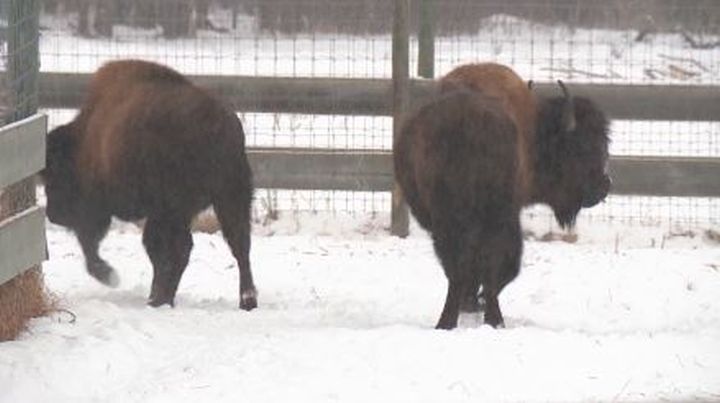A highly co-ordinated and tricky move is about to take place east of Edmonton. More than a dozen wood bison will be moved from Elk Island National Park.

Fourteen bison are being taken 500 kilometres northwest to Woodland Cree First Nation as part of Elk Island’s bison conservation program.
“I can’t wait to see that piece be reconnected with our community,” said Lawrence Lamouche, the First Nation’s traditional lands manager.
Bison populations across North America were decimated centuries ago by settlers hunting and destroying their habitat.
In the early 1900s, Elk Island became a haven for the animals with the population steadily increasing ever since.
The program has been so successful, nearly 3,000 bison have been relocated worldwide to countries including Scotland, Russia and the United States.
“By removing some of the bison from the park, we’re hoping to support the overall health of the bison, as well as to, you know, reduce that grazing pressure on the grasslands here at the park,” explained Dale Kirkland, the park’s superintendent.

Get breaking National news
Without predators in the park, annual translocation also helps simulate natural selection.
The move is also an act of reconciliation. Bison used to populate the area around Woodland Cree First Nation but they haven’t for the past century.
Community members say that has erased some of their history.
“We know some of that language has decreased, but when you integrate certain animals back, it revitalizes the culture, the language and the practices and the traditions within the community,” Lamouche said.
Since late December, about 100 bison have been baited into a small area within the national park.
This month, staff began catching them to draw blood and check for pregnancy and other health conditions.
They were also tagged and will be tracked until they are ready to be transferred.
Once they do settle onto the First Nation, they’ll primarily serve as food for the 1,200-member community. Some will also be bred to keep the population up.
True to their culture, every part of the animal will be used, though members do have some research ahead of them.
“We were wondering, well, my goodness, ‘How am I going to tan these buffalo hides?’ So that’s going to be a learning process too. Because their hide is thicker,” Elder Kathleen Laboucan told Global News.
About 30 bison are supposed to be sent to Russia but permits have not been approved yet.
Another group will be sent to auction as others are taken for disease testing.








Comments